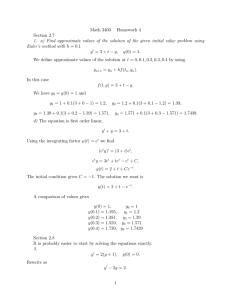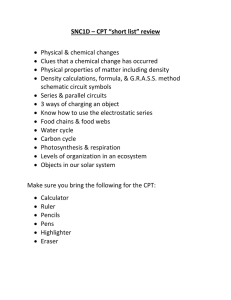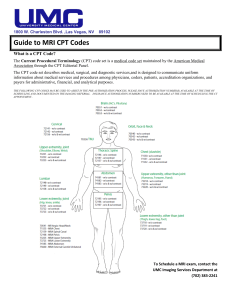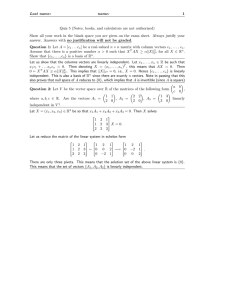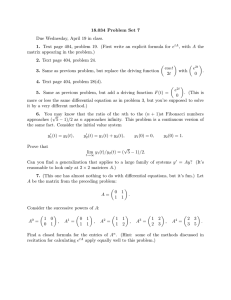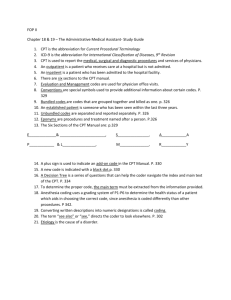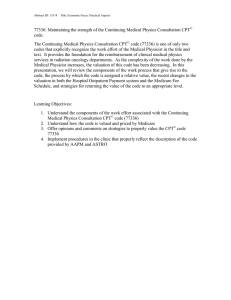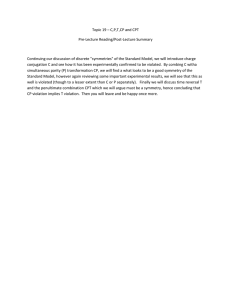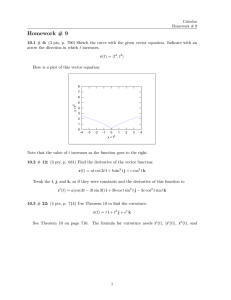Math 3400 Homework 2 Section 2.1 # 13
advertisement
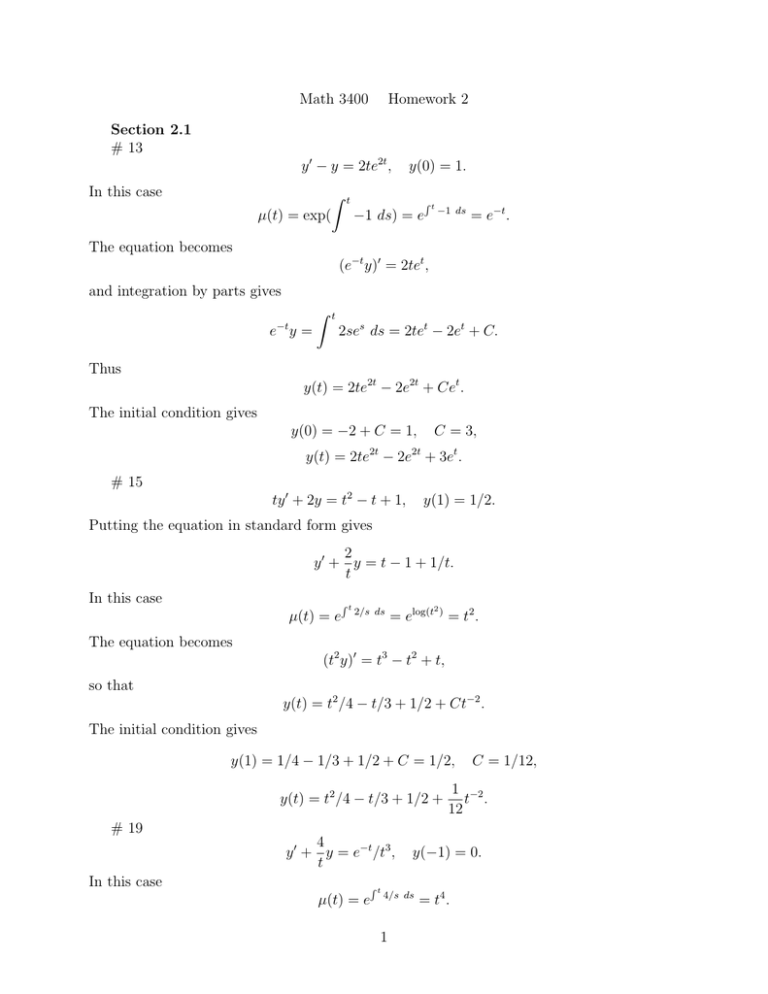
Math 3400 Homework 2 Section 2.1 # 13 y 0 − y = 2te2t , In this case y(0) = 1. t Z Rt −1 ds) = e µ(t) = exp( −1 ds = e−t . The equation becomes (e−t y)0 = 2tet , and integration by parts gives −t Z e y= t 2ses ds = 2tet − 2et + C. Thus y(t) = 2te2t − 2e2t + Cet . The initial condition gives y(0) = −2 + C = 1, C = 3, y(t) = 2te2t − 2e2t + 3et . # 15 ty 0 + 2y = t2 − t + 1, y(1) = 1/2. Putting the equation in standard form gives 2 y 0 + y = t − 1 + 1/t. t In this case Rt µ(t) = e 2/s ds 2 = elog(t ) = t2 . The equation becomes (t2 y)0 = t3 − t2 + t, so that y(t) = t2 /4 − t/3 + 1/2 + Ct−2 . The initial condition gives y(1) = 1/4 − 1/3 + 1/2 + C = 1/2, y(t) = t2 /4 − t/3 + 1/2 + C = 1/12, 1 −2 t . 12 # 19 4 y 0 + y = e−t /t3 , t In this case Rt µ(t) = e y(−1) = 0. 4/s ds 1 = t4 . The equation becomes (t4 y)0 = te−t , so that after integrating by parts y(t) = −t−3 e−t − t−4 e−t + Ct−4 . The initial condition gives y(−1) = C = 0, , y(t) = −e−t (1/t3 + 1/t4 ). # 28 2 y 0 + y = 1 − t/2. 3 In this case Rt µ(t) = e 2/3 ds = e2t/3 , and the equation may be rewritten as d 2t/3 t (e y) = e2t/3 − e2t/3 . dt 2 Solving for y in terms of y0 we find y(t) = 21 3t − + (y0 − 21/8)e−2t/3 . 8 4 To find a solution which touches but does not cross the t−axis, we want a t0 such that y(t0 ) = 0 and y 0 (t0 ) = 0. Going back to the differential equation, this gives 0 + 0 = 1 − t/2, or t = 2. Then we find 0 = y(2) = 21 3 21 − 2 + (y0 − )e−4/3 . 8 4 8 Some algebra leads to y0 = 21 9 4/3 − e ' −1.6429. 8 8 Section 2.2 # 2. dy x2 = dx y(1 + x3 ) may be rewritten as − x2 dy +y = 0. 3 1+x dx which has the form M (x) + N (y) 2 dy = 0. dx Integration gives Z x − or s2 ds + 1 + s3 Z y s ds = C, 1 − log|1 + x3 | + y 2 /2 = C. 3 # 4. dy 3x2 − 1 = . dx 3 + 2y Try the ’slicker’ (equivalent) method (3 + 2y)dy = (3x2 − 1)dx. Integration gives 3y + y 2 = x3 − x + C. # 8. x2 dy = . dx 1 + y2 Back to the original approach, −x2 + (1 + y 2 ) dy = 0. dx Integration gives −x3 /3 + y + y 3 /3 = C. # 12. dr r2 = , dθ θ With the basic approach, the equation is r(1) = 2. 1 dr 1 = 0. − + 2 θ r dθ The general solution is Z r 1 1 − ds + ds = C, s s2 and we can solve the initial value problem with Z θ Z r 1 1 − ds + ds = 0, 2 1 s 2 s Z θ which gives r 1 1 − log(θ) − s = − log(θ) + − = 0. 2 r 2 −1 Solving for r(θ) gives r= which is defined if 0 < θ < √ 1 2 = , 1/2 − log(θ) 1 − 2 log(θ) e. 3
